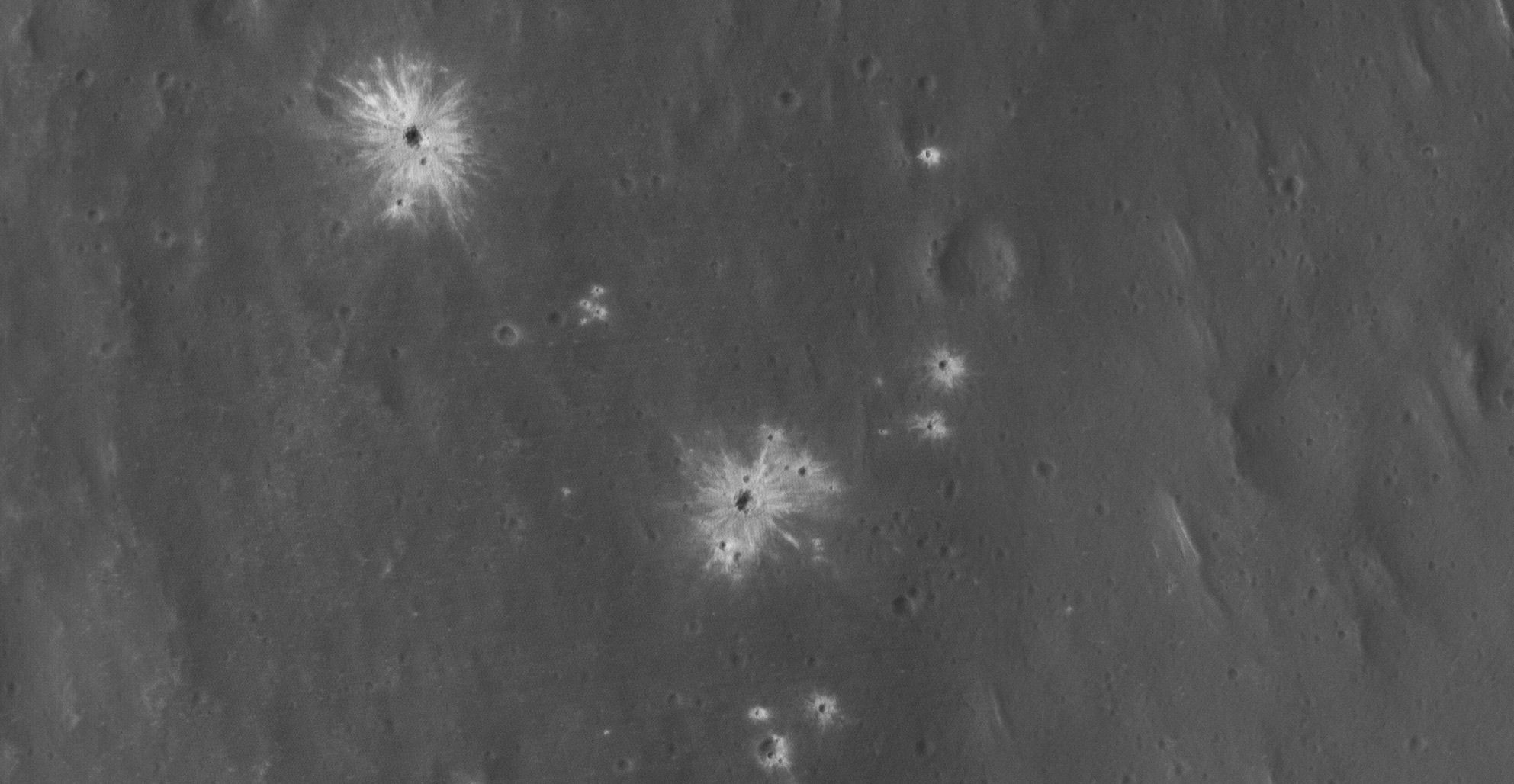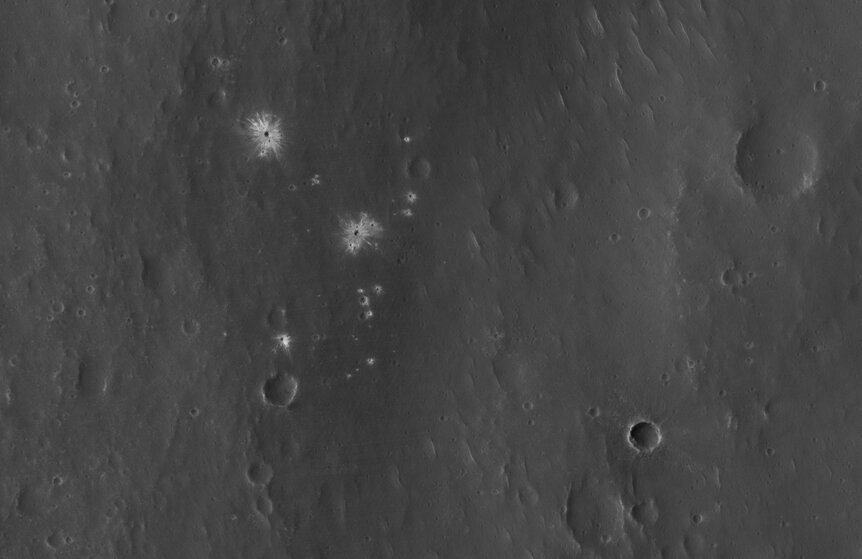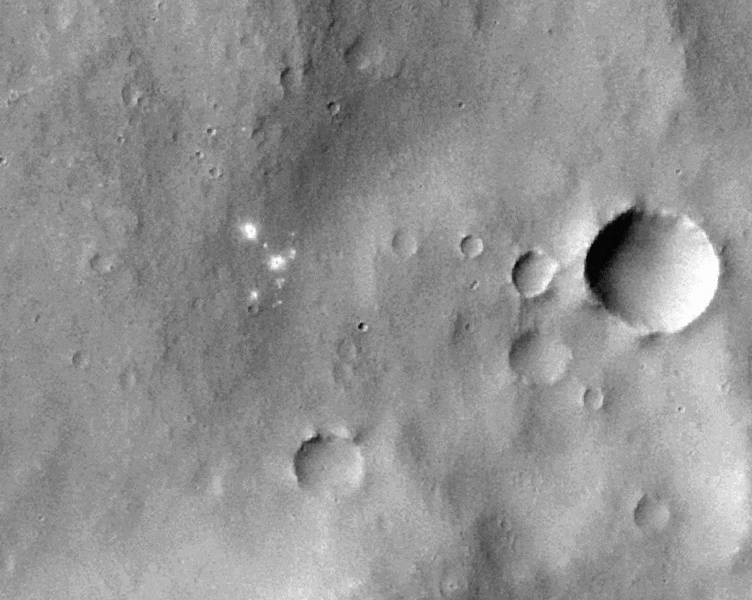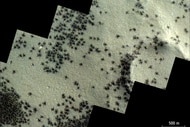Create a free profile to get unlimited access to exclusive videos, sweepstakes, and more!
Sometime in the past decade Mars suffered an impact shotgun blast

Sometime between 2009 and 2016, Mars got hit by a cosmic shotgun.
A small asteroid or piece of comet, probably not more than a couple of meter across, entered the atmosphere of Mars at high speed. As it did, it rammed the air in front of it at hypersonic velocities, compressing it mightily. When you compress a gas it heats up, and when you compress it with something moving dozens of kilometers per second it heats up a lot.
The air got so hot it glowed, and that heat was transferred to the meteoroid, which would start to melt and then vaporize within seconds. The pressure built up as the bit of cosmic debris dove deeper into the atmosphere.
If it had been made of iron, or solid rock, it likely would've been able to survive such a turbulent ride. But many asteroids are riddled with cracks and fissures, the scars of countless slow speed collisions with other small bodies over the age of the solar system. Something like that is far more fragile, and the extreme pressure of atmospheric passage broke it apart. It's essentially an explosion, the force of the sudden and furious release of energy when it splits.
So instead of slamming into the Martian surface intact and creating a small but circular crater, it broke apart, creating dozens of smaller meteoroids. Many of these then made it down to the ground, and when they did they left behind this:
Whoa. In this image taken by the HiRISE camera on board Mars Reconnaissance Orbiter, you can see 21 separate impacts that carved out craters up to 7 meters across.
Even cooler? This happened in the very recent past. As in a few years ago. An image taken in 2009 doesn't show the craters, while they do appear in another taken in 2016 (the image above was taken in 2018).
I took the two images spaced 7 years apart and created an animation to show you the difference:
The lighting and resolution are different between the two, but the new craters are pretty obvious.
For a moment I was thrown when I saw this; usually fresh craters are dark on Mars, excavating basaltic material that gets blasted out over the lighter-colored (sometimes dust-covered) landscape. This is the opposite. That's because this happened in a darker region, in material ejected by an older impact that made a crater about 60 km across some 130 km to the south. There must have been lighter colored material there originally, with darker stuff underneath. The impact that made the 60-km crater then dug up the darker stuff and overlaid it all over that region. These new, smaller impacts then brought up some of the original lighter surface material.
For a moment I wonder if this could be ice, which has been seen in some craters. But these new impacts were at a latitude of about -30° which is probably too close to the equator for ice to survive under the surface for long. Plus, ice is very reflective, and while this material is bright, it's not ice-bright.
This is a reminder that impacts aren't always simple. They depend on a lot of factors: The size of the incoming impactor, its speed and entry angle, the atmospheric density, the material on the surface and beneath it, what the impactor is made of and its internal structure… and of course what planet it hits.
All of these play together to create an impact event. And given that this event happened no more than nine years ago, it's a chance to watch and see how craters erode over time, too.
So this is also not-so-gentle reminder that, although we may think of Mars as not being a terribly active world especially when compared to Earth, there's still stuff going on there… even if it means importing the action from space.
Tip o' the Whipple Shield, as always for such things, to the Mars Reconnaissance Orbiter HiRISE Twitter feed.
















